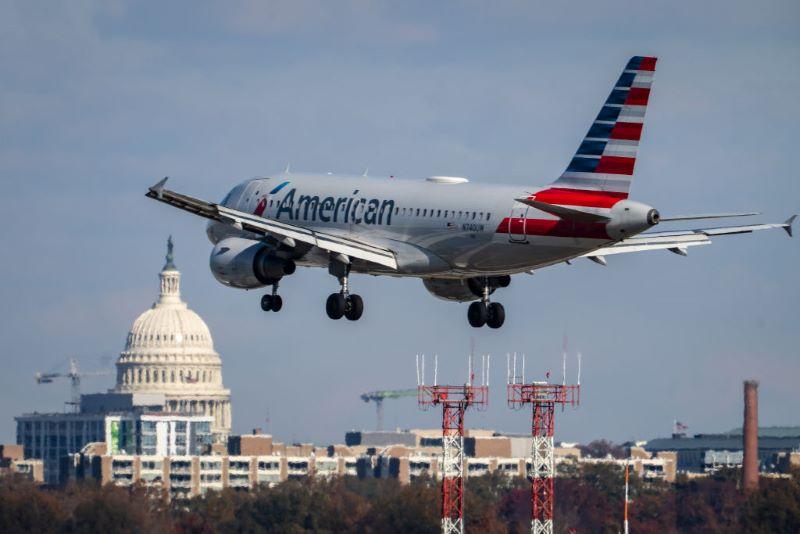How a U.S. Government Shutdown Could Disrupt Airlines, Airports & Travelers

If U.S. congressional lawmakers fail to pass a spending package by October 1, the federal government could shut down—an event that would not ground flights entirely but could create significant disruptions for airlines, airports, and travelers. The fallout would likely include longer airport lines, delayed flights, halted modernization projects, and even tourism revenue losses at a national scale.
Flights themselves would continue, as both air traffic controllers and Transportation Security Administration (TSA) screeners are considered essential employees. But these workers would be required to show up without pay. During past shutdowns, that scenario has quickly strained operations, leading to staffing shortages, absenteeism, and longer waits at security checkpoints. In January 2019, for example, just ten air traffic controllers calling out sick forced temporary shutdowns at New York’s LaGuardia Airport and triggered cascading delays at Philadelphia, Atlanta, and Newark. A similar pattern could repeat, particularly at congested U.S. hubs.
The Federal Aviation Administration (FAA) would also face limitations. According to its contingency plan, hiring and training of new air traffic controllers would pause, along with field training and performance analysis. That could not come at a worse time: in September, Transportation Secretary Sean P. Duffy announced that the FAA had just hit its goal of hiring more than 2,000 new controllers for fiscal year 2025. A shutdown would stall their training and delay much-needed staffing relief. Certification and oversight of airline operations could also be slowed, raising concerns among industry stakeholders.
For travelers, the immediate impact would be visible at airports. Longer TSA lines and potential delays at passport control could frustrate both U.S. passengers and international visitors. Airline itineraries might be muddled by staff shortages, and while most flights would still operate, the risk of delays and cancellations would grow the longer a shutdown lasted. Beyond aviation, U.S. national parks would likely close, limiting domestic tourism, while overseas visitors could face bottlenecks in visa processing.
The broader travel economy would also feel the strain. The U.S. Travel Association estimates shutdowns cost the sector more than $1 billion per week in lost revenue. That kind of setback would come as many tour operators and hospitality businesses are still grappling with reduced inbound demand, particularly from Canadian travelers who have voiced reluctance to visit the U.S. during the Trump administration.
Amtrak Not affected
Not all transport would be affected equally. Amtrak, for instance, has confirmed it will continue operating, even if federal funding lapses, because it functions as an independent agency despite receiving public subsidies. But for aviation—a sector already stretched by pilot shortages and post-pandemic demand surges—a shutdown threatens to add yet another layer of operational instability.
What Travelers Should Expect & How to Prepare
- Expect delays & cancellations. In a worst-case scenario, some flights might be canceled or delayed, particularly in congested corridors.
- Arrive earlier. Allow extra time at airports, especially at major hubs or during peak hours.
- Keep documents current. U.S. Customs, Passport services, and certain visa processing may slow, so have documentation (passport, ESTA, etc.) ready.
- Monitor status updates. Pay attention to airline notifications, airport alerts, and TSA announcements—plans may change rapidly.
- Maintain flexibility. Be ready for schedule changes, alternate flights, or even rebooking.
- Look abroad cautiously. For international travelers entering the U.S., a flight may arrive, but immigration or customs delays are possible.
A short government shutdown would likely mean moderate disruptions—longer airport security lines, a few flight delays, and temporary pauses in FAA hiring and training programs. But the longer the impasse drags on, the more severe the consequences become: widespread delays, safety backlogs, halted modernization projects, and mounting commercial losses across airlines, airports, and regional economies.
The aviation sector is urging Congress to act swiftly to prevent such fallout. While a shutdown would not stop planes from flying, it would inject uncertainty into nearly every part of the travel experience, from security checkpoints to national park visits. For travelers and airlines alike, the warning is clear: expect delays, diminished service, and turbulence on the ground until lawmakers reach a funding deal.
Related News: Lawmakers Propose FAA Shutdown Bill to Protect Air Traffic and Safety Operations, https://airguide.info/category/air-travel-business/travel-health-security/
Sources: AirGuide Business airguide.info, bing.com, cnn.com, UpgradedPoints.com, reuters.com
